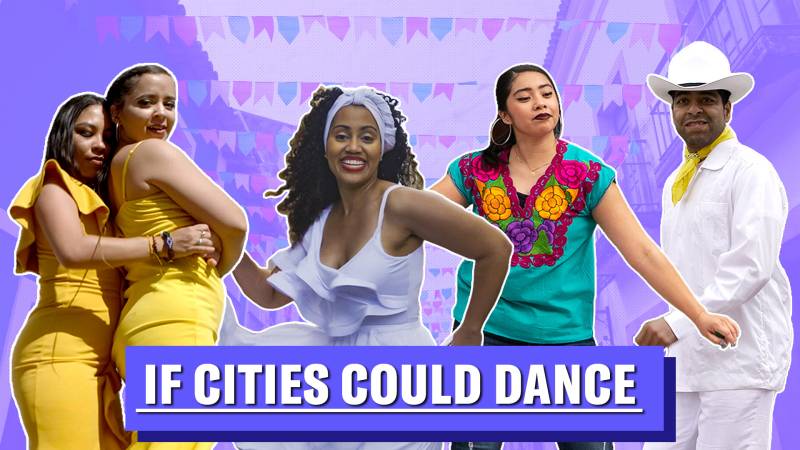If Cities Could Dance is KQED Arts and Culture’s award-winning video series featuring dancers across the country who represent their city’s signature moves. Subscribe to our YouTube channel to never miss an episode of If Cities Could Dance. And tell us what you like most about our series in our community poll!
This Latinx Heritage Month, we’re looking back on bold artists from across the country who expand our ideas of identity, community and dance.
Angie and Audrey
Angie Egea and Audrey Guerrero, a non-binary couple who came together through their love of Latin dancing, are making the Austin, Texas, salsa scene more inclusive. Angie and Audrey challenge the traditional binary in salsa—where the man leads and the woman follows. Instead, they take turns leading and following, often switching roles within a dance. And don’t miss their dance tutorial.
La Mezcla
San Francisco’s La Mezcla dance company, founded and led by Vanessa Sanchez, blends tap dance and zapateado (rhythmic footwork from Mexico) to tell stories of Chicana history, culture and resistance. For their work Pachuquísmo, dancers embody zoot-suited Chicanas of 1940s Los Angeles and take their movement to the streets of the Mission District. Check out Vanessa’s basic tap dance tutorial too.
Safos Dance Theatre
Pursuing a professional dance career in Tucson, Arizona, Yvonne Montoya didn’t see brown bodies like hers on stage. So she founded Safos Dance Theatre to nurture a local community of dance artists who are Latinx, immigrants, queer and other dancers of color. In one work inspired by Montaya’s own family’s history, Safos Dance Theatre tells the story of braceros, migrant farm workers from Mexico who provided seasonal labor to the U.S.
Mar and María Cruz
Sisters Mar and María Cruz, born and raised in Puerto Rico, represent a new movement of Afro Latinos who are reclaiming their cultural traditions to celebrate Black pride and acknowledge the island’s complex history of racism. Mar also teaches the foundation of Bomba, and breaks down the steps in this dance tutorial.
Los diablos de Juxtlahuaca Oaxaca
In Fresno, California, farm workers and community members—many of whom are Mexican immigrants—carry on a tradition from the Oaxacan community of Casa San Miguel. Dancers don traditional masks and costumes, all made in Oaxaca; spin to thumping drums and horn blasts; and move in a whip-wielding, barely controlled frenzy called the Danza de los Diablos.


